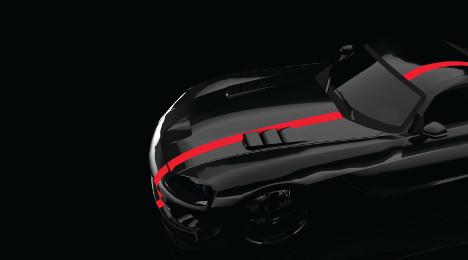4 questions with NABD’s Ken Shilson

By subscribing, you agree to receive communications from Auto Remarketing and our partners in accordance with our Privacy Policy. We may share your information with select partners and sponsors who may contact you about their products and services. You may unsubscribe at any time.
CARY, N.C. –
In the latest installment of the annual Power 300 issue of Auto Remarketing, we go behind the scenes with some of the leading companies in the used-car space and their top executives with a few Q&A features.
Next up in this series is Ken Shilson, president and founder of the National Alliance of Buy-Here, Pay-Here Dealers.
Auto Remarketing: What are the elements about buy-here, pay-here you think are the best?
Ken Shilson: The first thing is America is car dependent. The customers that we serve are typically unbankable in that they can’t obtain a traditional loan to purchase a vehicle they need to get back and forth to work and to live. We fill an important niche in that area.
Beyond that, these people lack financial capacity, so therefore when they have a life event or a major car repair like transmission or engine problems, they don’t have the financial wherewithal to be able to fix it. But the buy-here, pay-here industry solves that because we typically finance those repairs and help them keep that car on the road. Instead of just selling a vehicle like other parts of the industry, we’re selling a transportation solution. We’re getting them a vehicle and we’re also helping them keep it running in a segment of our population that otherwise wouldn’t have transportation. That’s the role that we play.
We also grant people additional credit when others are saying no.
Subscribe to Auto Remarketing to stay informed and stay ahead.
By subscribing, you agree to receive communications from Auto Remarketing and our partners in accordance with our Privacy Policy. We may share your information with select partners and sponsors who may contact you about their products and services. You may unsubscribe at any time.
AR: How much about buy-here, pay-here is still misunderstood by regulators and consumer advocates?
KS: I think not all but some of the consumer advocates look at the high cost of financing for people who have had credit problems and they don’t understand why that is. You have to look a little deeper and say when you’ve had a past credit problem, nobody wants to extend you credit and you have limited options, you should have to pay a premium. The risk that somebody is taking in extending that financing to people who have had past credit problems is significant. Typically when people call me and say how can you justify charging someone 20 or 21 percent interest? Before I answer I turn it around say, “OK, if someone came to you and wanted to borrow $10,000 largely on an unsecured basis and they had past repossessions and maybe a bankruptcy, what would you charge them to make that loan?” They said, “It’s easy. We wouldn’t make that loan at all.” I said, “That’s exactly the point.” When you’re the one who is willing to take all of the risk, you deserve a premium.
To my knowledge, you shouldn’t have to apologize for pricing risk into the equation. That’s what you’re taught in Finance 101.
AR: When executed properly, how much can a buy-here, pay-here division benefit a large dealer group?
KS: It can provide an important complement to franchised operations in the sense that franchised dealers typically get a lot of great inventory through trade-ins. But that inventory doesn’t necessarily fit what they sell on their used-car lot either by virtue that it has more miles on it or it is an older vehicle. Maybe it has some characteristics that don’t lend itself to put out in the used-car operation that they have. Rather than wholesaling that vehicle to somebody who is going to take it and turn it into a buy-here, pay-here vehicle and create more competition, they can set up a segment of their business where they can realize a nice profit off that vehicle when they resell it rather than wholesaling it at virtually no profit or even at a loss in some cases. It’s a great way for them to mine more profit out of something that’s inherent in their business, the trade-in.
AR: How much has Wall Street’s view of buy-here, pay-here changed in the past few years?
KS: Just recently in the last two years, Wall Street has been moving into the auto bond securitization market where it’s analogous to a degree to what they were doing in the mortgage industry where they bundle up pools of these auto loans, package them up and lay them off to investors. The reason they like it is the prospective yields on these transactions are extremely attractive, particularly in the low-yielding environment today.
Money is so cheap that they can do big transactions with a huge spread in them. That’s why you’ve seen an enormous number of auto bond securitization transactions in the last two and a half years, just billions. But not all of it is working out because of the way some of the deals were structured. Nonetheless, Wall Street has had a lot to do with the highly competitive environment that the independent dealer is facing today.
Additional pieces from this series can be found below:
4 questions with AUL's Jimmy Atkinson
Q&A with Jared Rowe
4 questions with Costo Auto Program's Lori Grone
4 questions with Tony Hughes of Moody’s Analytics
4 questions with Equifax's Lou Loquasto


